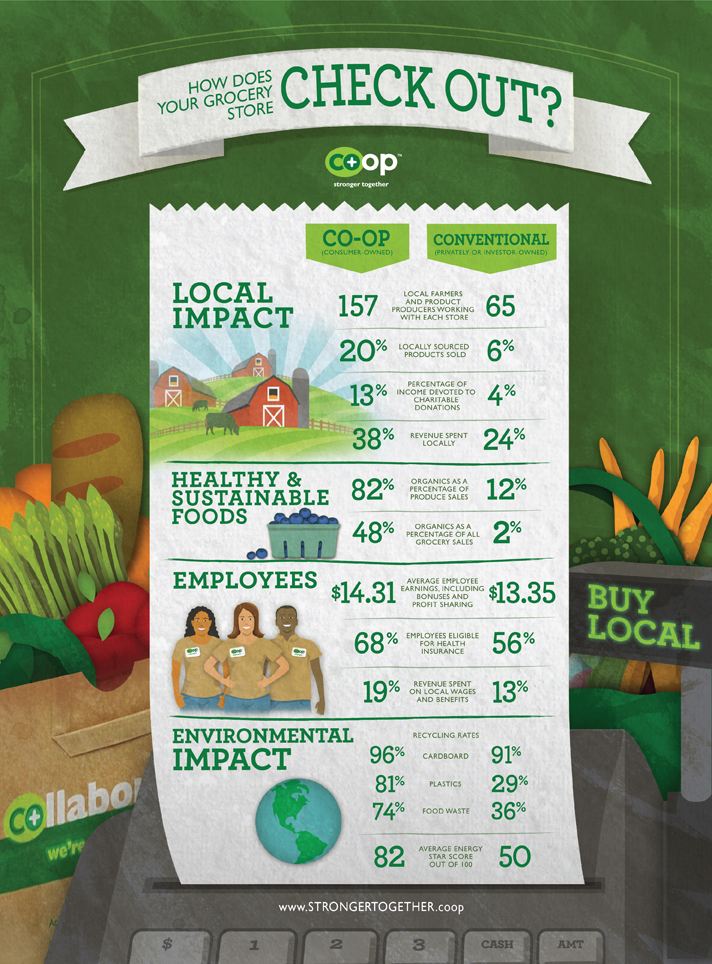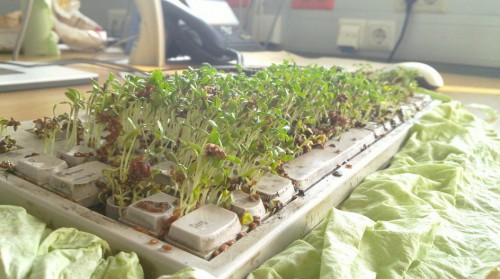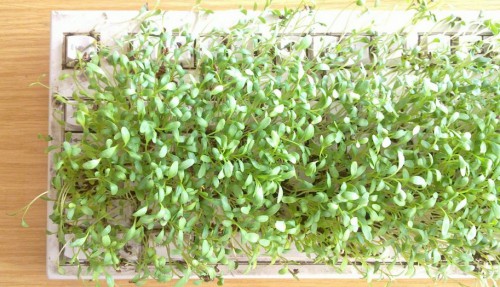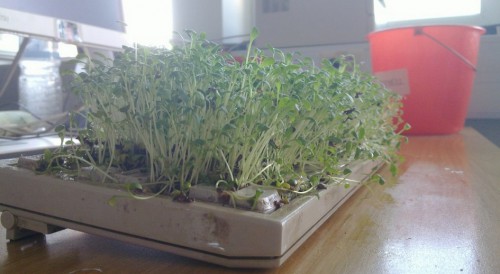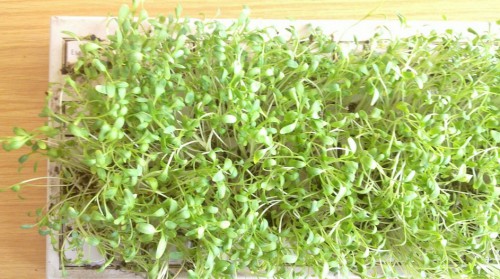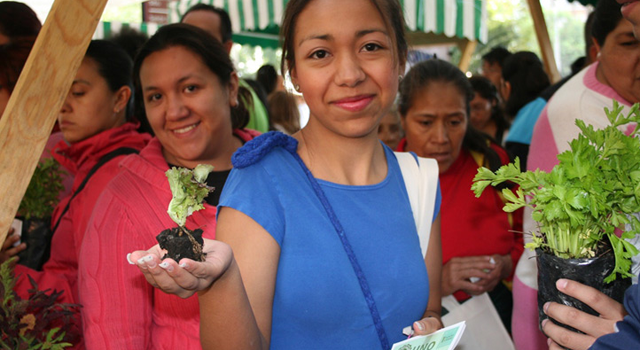Thursday, August 30, 2012
8 Tips for a Green Home and Yard
Labels:
Earth,
environmental,
EPA,
Green,
Green Tips,
Home,
Local,
Pesticides,
Renewable Energy,
Save Money,
sustainable,
Tips,
Water,
Yard
Tuesday, August 28, 2012
Breakfast: The Most Important Meal of Every Day
Arch Design House shows us that Breakfast really is the most important meal of the day...every single day.
"Breakfast is the most important meal."
93% of Americans totally agree with this statement
But surprisingly, 56% SKIP breakfast every day
People who skip breakfast tend to have:
-Higher cholesterol
-Elevated insulin levels
-Larger waist circumferences
Benefits of eating breakfast:
-Improved concentration & performance
-More strength & endurance to engage in physical activity
-Lower cholesterol levels
Breakfast eaters by age:
18-24 : 53%
34-44 : 55%
45-54 : 54%
55-64 : 71%
65+ : 83%
The Most odd breakfast:
39% of Americans have at some point, eaten cold pizza for breakfast
This is a phenomenon documented by singer Christine Lavin back in 1986:
"I want cold pizza for breakfast and a pinch 'o cold spaghetti will do but there's nothing in the world that I like better than eatin' cold pizza with you"
and here's what normal Americans eat for breakfast:
31%: Cold Cereal
13%: Meat & Eggs
12%: Toast, French Toast, Bagels
9%: Eggs
9%: Hot Cereal
6%: Fruit
4%: Muffins & Pastries
3%: Bacon
3%: Yogurt & Smoothies
2%: Pancakes & Waffles
8%: Other
So what should I eat for breakfast?
-Oatmeal with flaxseed, blueberries, almonds
-Cereal with milk
-Yogurt with fresh berries, granola
-Fruit: Cut up apples, melons, berries, oranges, pears, bananas, grapes (and cottage cheese if you're brave)
-Eggs: Hard boiled, omelet, scrambled, sunny side up
-Muffins: Blueberry, banana, oat bran
-Toast & Bread: French toast, pizza toast, cream cheese, PB & J
-Waffles & Pancakes with maple syrup
"All happiness depends on a leisurely breakfast"
- John Gunther
Labels:
age,
america,
breakfast,
cholesterol,
cold pizza,
diet,
endurance,
fitness,
food,
good health,
health,
infograph,
john gunther,
meal,
nutrition,
strength
Monday, August 27, 2012
HOW TO: Enjoy Your Labor Day Weekend
You probably don't need anyone to tell you how to spend your Labor Day weekend, but the fine folks at Organic Gardening came up with a list of a few nifty ways to enjoy the long weekend. We think they're pretty great, so we figured we'd share them with you. Enjoy!
2. Dig a root cellar. Not sure where or how to store all the fresh produce you got at the farmers’ market? A root cellar could be the answer. Don’t worry—you don’t have to literally dig one out of the ground (though you could, if you’re looking for a weekend project). Odds are there’s a cool, dark space somewhere in your home that will do: a shelf in the basement, an unused closet, even space under your porch.
3. Avoid overeating. Most holidays have a strong food component, and with its various buffets, cookouts, and picnics, Labor Day weekend is no exception. So follow the healthy-eating advice we offered back on July 4. Simple tactics like choosing smaller plates and keeping a count of your drinks can have a big impact on your calorie intake. And when it comes to overeating, keep the big picture in mind: Most of the food we’re exposed to has been pumped up with extra fat, sugar, and salt to play on our biologically hard-wired food cravings.
4. Get ready for fall allergies. If you’e prone to autumn allergies, ragweed and other triggers may already have you sneezing. Arm yourself with some easy nondrug allergy remedies that will cut down on the need for pills. Make sure your diet includes foods rich in folate, a B vitamin that seems to protect against allergies. And learn about some things you can do around the house to prepare for fall allergy season.
5. Do some late-season gardening. It’s not too late in the year to get your hands dirty, even if you don’t live in a southern part of the country. Good late-summer garden projects include planting garlic, installing a birdbath, or digging next year’s beds. You can also start a compost pile to build up some natural fertilizer for next year’s garden. If your garden’s lush right now, take an inventory of how high everything’s grown, and build some homemade supports and trellises that will give next year’s crop a lift. Or start your fall garden cleanup so your soil will he healthy and ready come spring.
6. Clean with vinegar. If you’re using some of the extended weekend to get some housecleaning done, try out the cheap, easy, ecosafe alternative to harsh chemical cleansers. Fast becoming the second-favorite liquid of the Rodale.com staff (water is number 1, of course), vinegar has all kinds of awesome uses. For basic cleaning, 1 part vinegar to 9 parts water will wipe out germs and grime. Mix vinegar with other natural ingredients to make specialized cleaners that cost a fraction of the toxic stuff you get at the stores.
7. Try canning or pickling. With some basic supplies and traditional canning techniques, you can preserve your favorite summer fruits and vegetables to enjoy in fall and winter. Check out Rodale.com's Nickel Pincher for a canning primer that you can use to make fruit preserves and jellies. You can apply the same skills to other fruit canning recipes, and try canning some tomatoes and pasta sauces. Or try your hand at pickling.
8. Relax. Maybe you’re one of those people who have trouble unwinding after a busy week. A great way to signal to your body that it’s time to relax is to spend some time in nature, so hang out outside as much as you can. Try a calming beverage and review our list of holiday stress-busters, which, though December-oriented, could also apply to anyone who’s running around buying charcoal or struggling with the logistics of one last desperate beach weekend. Anyway, those end-of-the year holidays will be here before you know it.
Labels:
Certified Organic,
clean energy,
Compost,
crops,
environmental,
food,
fruit,
Fun,
holiday,
labor day,
Organic,
Organic Holidays,
reduce waste,
relax,
sustainability,
sustainable,
weekend
Wednesday, August 22, 2012
How Does Your Grocery Store Check Out?
Labels:
agriculture online,
Biodiversity,
co op,
co-op,
department of agriculture. sustainable agriculture,
environmental,
Fair Trade,
food,
fruit,
health,
healthy,
sustainable,
urban farming,
vegetables
Friday, August 17, 2012
Harvard Student Designs Dirt-Powered Phone Charger
Wind turbines and solar panels don’t only generate large amounts of power, they do so without the pollution and danger that come along with fossil fuels. But for the millions around the world that live without access to reliable power, waiting for a wind farm to pop up is a long and frustrating task.
What many in developing nations need isn’t the ability to keep the lights on 24/7. For most, just having enough power to recharge a cell phone would be life-changing. That’s why Harvard Ph.D student Aviva Presser Aiden decided to look for a much smaller solution. One that’s as simple as a pile of dirt, actually.
A few years ago, the former engineer was working in Africa, looking to get more electric light into remote parts of the continent. While others focused on harnessing solar power, Aiden and her colleagues were more interested in the dirt beneath their feet. Previous research has revealed that soil microbes can be a natural source of energy. Certain naturally occurring soil microbes produce free electrons during the course of their ordinary metabolic processes. A Microbial Fuel Cell (MFC) uses a conductive surface to harvest these electrons and use them as a power source.
In 2011, Aiden’s idea for an MFC-based cell phone charger caught the attention of the Bill & Melinda Gates Foundation. The Foundation gave Aiden and her Harvard team $100,000 to turn the concept into a reality.
If you’re wondering how in the heck you convince soil-dwelling microbes to charge your phone, this explanation from PS Mag will help: “First you need some kind of jar, with a piece of graphite or some other non-corrosive metal, at the bottom. Then put in dirt with very little oxygen, and another piece of graphite. Soil microbes are constantly making electrons, but if there’s oxygen about they’ll put the electrons into the oxygen. If there isn’t any oxygen, they’ll dump the electrons on pieces of metal—i.e. the graphite.”
Unlike solar panels, MFCs do not require any sophisticated materials: they can be easily assembled in only a few minutes. If Aiden’s concept is successful, Africans may soon be able to assemble their own chargers almost entirely from scratch, and at minimal cost that will be recouped with the very first recharge.
Aiden plans to return to Uganda this month with a collection of dirt-power kits for real world testing.
(via Revmodo)
Labels:
Africa,
Cell Phone,
clean energy,
Harvard,
sustainability,
sustainable
Thursday, August 16, 2012
What Does Recycling Look Like To A Child?
Labels:
children,
clean energy,
Organic,
recycling,
reduce waste,
sustainability,
sustainable
Wednesday, August 15, 2012
Keyboard Chia Pet
Though most people wouldn’t choose to entertain themselves by watching grass grow, this impromptu herb garden might be an exception. This office prank, executed over the course of 17 days while the owner of this old, dingy keyboard was on vacation either deserves enshrinement in the passive aggression hall of fame, or some environmental award for repurposing with hilarity.
Labels:
funny,
jokes,
keyboard chia pet,
office prank,
pranks
Monday, August 13, 2012
Trading Recycling for Food and Services
Sustainable Energy awareness platform Revmodo recently reported on the growing success and popularity of recycle for food and services programs that first took off in Brazil and most recently spread to Mexico. It is truly touching to see the enormous success of everyday people donating their time to help reduce waste. It will be very interesting to see future generations come of age in an area demonstrating such a strong example of working to create a more sustainable future as well as the importance of fresh, locally grown produce.
Take a look at the full story below; Do you think a system such as this is possible in the United States? Why or why not? We would love to hear from you in the comments.
The city of Jundiai, Brazil, once struggled with litter-cluttered streets and trash-filled waterways. But 10 years ago, the city government launched a new program, called Delicious Recycling, designed to get more residents to recycle. In exchange for collecting cans and bottles, the city gives residents fresh produce grown in a local public garden. Now, the garden grows more than 30,000 plants to keep up with demand.
Other cities in Central and South America — particularly in Brazil — have similar programs. Curitiba, Brazil, began a recycling incentive program even earlier, offering transportation passes in exchange for recyclables. Residents of local shantytowns are employed to collect more trash, and the recyclable materials are sold to raise money for social services. The city now recycles 70 percent of its waste.
Inspired by the other programs, Mexico City is also now offering food in exchange for recycling.
The city has a major challenge with waste; it closed the largest landfill in the world last year, a 927-acre space that collected more than 76 million tons of trash. Now, the closed landfill will be tapped to generate power through its methane emissions. But every day, the city produces around 12,600 metric tons of new trash, and the government is looking for ways to dramatically cut that. The waste-to-food program is helping. When residents bring in their recycling, they’re given “green points” that can be spent at a local farmers’ market. It’s been a success so far, and the first market was so popular that all three tons of food were quickly given away.
Tuesday, August 7, 2012
Do certification labels really matter?
More good information from our friends at NewHope360:
As consumers grow weary over subpar food regulations at the federal level, manufacturers are increasingly seeking ways to help shoppers distinguish their products from the sea of conventional (and often irresponsibly produced) items. Certification labels—sometimes referred to as eco labels—are skyrocketing in popularity. Among the most ubiquitous? Certified Organic, Fair Trade, Non-GMO Project, and Gluten Free. But while certifications signal something to the consumer, do they actually have tangible benefits for the farmers who grow the raw materials?
Chances are you have also seen the Rainforest Alliance Certified logo—characterized by a little green frog—on packages of natural chocolates, coffee, tea, or fruit juices. But what exactly does the logo mean? And how does it differ from the wealth of other eco labels available?
After researching the stipulations involved with the Rainforest Alliance Certification, it was time to venture into the belly of the beast and see the positive changes, if any, gleaned from sustainable agricultural methods first hand.
Destination? Guatemala.
Crop? Coffee.
Certification requirements
Obtaining and maintaining Rainforest Alliance Certification is tough. Farms must adhere to stringent standards set by the Sustainable Agriculture Network; including ecosystem and water conservation, wildlife protection, safe working conditions, and waste management, among others. There are 100 different criteria in total, 14 of which are critical, and absolutely necessary. During certification evaluation, the farm must score at least 80 percent adherence to achieve certification. Independent auditors inspect the farm every year in order to ensure criteria are upheld.
About the Rainforest Alliance Certified label
If a manufacturer wants to display the “little green frog” on their package, the product must contain at least 30 percent Rainforest Alliance Certified content on the understanding that it takes time to build supply chains. But there are a few conditions: The percentage must be labeled on package to ensure transparency, and the company must commit to scale up by 15 percent each year until the product reaches 100 percent certified materials.
Making compost
La Azotea, a coffee farm located just outside the historic city of Antigua, Guatemala, lies in the shadow of three volcanoes, one of which emits smoke almost daily. The Rainforest Alliance Certified farm follows a rigorous composting system. Workers mix coffee pulp and horse manure into long rows, and let it sit and bake in the sun.
The composting process
"After 38 to 40 days, the compost is moved into a dark indoor shed for 8 days, where it’s processed by worms—creating a rich, dark soil," says Vicente Cuyuch, compost manager at La Azotea. "The compost is applied either at the roots or sprayed directly onto the coffee plant."
Along with producing a stronger and healthier plant, using compost enhances the end product too—many say La Azotea’s coffee is perfectly balanced.
Fostering biodiversity
In the Northwest region of Guatemala, nestled deep into the mountainous landscape rests ADESC (Asociación de desarrollo Social Los Chujes), a group of 68 small coffee farms certified by the Rainforest Alliance. 5,250 feet in elevation, the farm certainly looks like a rainforest. The coffee plants are small and shrub-like, and stand no more than eight feet tall (making it easier for workers to harvest by hand).
Most coffee in Guatemala is grown in the shade a portion of the year. Tall, feathery gravilea trees are planted to provide shade and humidity during the dry summer months. Other vegetation like mango and banana trees are planted to encourage bird populations and butterflies. When standing in the coffee grove you can hear wildlife in the area. The presence of spiders on the coffee plants is a hallmark of a healthy forest, says Mario Lopez, agriculture project coordinator for the Rainforest Alliance. ADESC sells all of it's coffee to Nespresso—a company that encourages sustainable coffee agriculture.
Water filtration
Cultivating larger trees amidst smaller coffee plants fosters a stronger root structure, which prevents erosion of the mountainside. Here, we see when soil contains more plants, it filters water better, leading to clearer rivers. This demonstrates the importance of having a complex plant system (multiple types of plants growing in one area rather than one species).
Dual fertilizers
Farms aren’t required to be organic in order to be Rainforest Alliance Certified. But they are prohibited from using most pesticides or planting GMOs (more on this later). Organic coffee in the Guatemalan highlands actually has lower yields and lower quality: the berries are smaller, and the acidity is unbalanced. One farmer said organic coffee must be grown in 100 percent shade all the time—which leads to more bugs.
Some conventional farmers are untrained in responsible agriculture: fertilizers are often overused because they assume the more chemicals, the better. At ADESC, soil samples are collected and analyzed every year to determine what type and how much fertilizer—a combination of nitrogen, phosphorus, and potassium—is needed. Organic fertilizer, made from the outer layer of the coffee beans (called parchment or pulp), is used to improve the quality of the soil. Farmers apply both types of fertilizer in a half-moon shape around the base of the coffee plant, and cover it with soil to prevent runoff into rivers.
Meet Latissia Monzón Gómez
Latissia Monzón Gómez has been working with the coffee association for twelve years. She owns a beautiful 8.6 acre parcel of land in ADESC that she calls The Garden. It’s a steep farm, and it contains step-like terraces built in order for farmers to access the plants. Prior to obtaining Rainforest Alliance Certification, Latissia saw climate change first hand: it used to rain a little bit every day, but now there are large storms, followed by long droughts—and she felt helpless against it.
“We don’t have to be a part of this program, but we do it voluntarily because we have to adapt to and mitigate climate change,” explains Gómez. “To mitigate means to reduce our impact—we are responsible for the environment. Although my farm is tiny, maybe it can inspire others to be more sustainable.”
Gómez frequently gives speeches to other coffee farms in the area to advocate for environmentally friendly agriculture.
Non-GMO
While there are no genetically engineered crops the Rainforest Alliance normally certifies, the organization takes a strong stance against GMOs—especially considering there have been transgenic experiments in coffee, albeit with no field deployment.
“Potential health impacts aside, there are significant ecological risks that we believe have not been sufficiently studied,” says Chris Wille, chief of sustainable agriculture fore the Rainforest Alliance. “These include possible impacts on pollinators and other wildlife, potential runaway hybridization, and the risk of GMOs turning invasive. The study results are all over the map.
“Anyways, with a large percentage of consumers and even entire countries (for example, Germany) avoiding GMOs like the plague, green-minded food companies and retailers don’t want GMOs, certified or not.”
Certification challenges
Apart from following the practices required, many farm owners think training their workers is the hardest aspect of sustainable agriculture.
“You have to get the workers to understand the impacts agriculture has on the environment,” says Oscar Ramos, farm manager at La Azotea. “If someone has been farming with agrochemicals for decades, it’s a lot to ask to have them change their methods. Once they understand sustainability, they start to care. And then they start to take pride in their work."
Photos courtesy of the Rainforest Alliance.
As consumers grow weary over subpar food regulations at the federal level, manufacturers are increasingly seeking ways to help shoppers distinguish their products from the sea of conventional (and often irresponsibly produced) items. Certification labels—sometimes referred to as eco labels—are skyrocketing in popularity. Among the most ubiquitous? Certified Organic, Fair Trade, Non-GMO Project, and Gluten Free. But while certifications signal something to the consumer, do they actually have tangible benefits for the farmers who grow the raw materials?
Chances are you have also seen the Rainforest Alliance Certified logo—characterized by a little green frog—on packages of natural chocolates, coffee, tea, or fruit juices. But what exactly does the logo mean? And how does it differ from the wealth of other eco labels available?
After researching the stipulations involved with the Rainforest Alliance Certification, it was time to venture into the belly of the beast and see the positive changes, if any, gleaned from sustainable agricultural methods first hand.
Destination? Guatemala.
Crop? Coffee.
Certification requirements
Obtaining and maintaining Rainforest Alliance Certification is tough. Farms must adhere to stringent standards set by the Sustainable Agriculture Network; including ecosystem and water conservation, wildlife protection, safe working conditions, and waste management, among others. There are 100 different criteria in total, 14 of which are critical, and absolutely necessary. During certification evaluation, the farm must score at least 80 percent adherence to achieve certification. Independent auditors inspect the farm every year in order to ensure criteria are upheld.
About the Rainforest Alliance Certified label
If a manufacturer wants to display the “little green frog” on their package, the product must contain at least 30 percent Rainforest Alliance Certified content on the understanding that it takes time to build supply chains. But there are a few conditions: The percentage must be labeled on package to ensure transparency, and the company must commit to scale up by 15 percent each year until the product reaches 100 percent certified materials.
Making compost
La Azotea, a coffee farm located just outside the historic city of Antigua, Guatemala, lies in the shadow of three volcanoes, one of which emits smoke almost daily. The Rainforest Alliance Certified farm follows a rigorous composting system. Workers mix coffee pulp and horse manure into long rows, and let it sit and bake in the sun.
The composting process
"After 38 to 40 days, the compost is moved into a dark indoor shed for 8 days, where it’s processed by worms—creating a rich, dark soil," says Vicente Cuyuch, compost manager at La Azotea. "The compost is applied either at the roots or sprayed directly onto the coffee plant."
Along with producing a stronger and healthier plant, using compost enhances the end product too—many say La Azotea’s coffee is perfectly balanced.
Fostering biodiversity
In the Northwest region of Guatemala, nestled deep into the mountainous landscape rests ADESC (Asociación de desarrollo Social Los Chujes), a group of 68 small coffee farms certified by the Rainforest Alliance. 5,250 feet in elevation, the farm certainly looks like a rainforest. The coffee plants are small and shrub-like, and stand no more than eight feet tall (making it easier for workers to harvest by hand).
Most coffee in Guatemala is grown in the shade a portion of the year. Tall, feathery gravilea trees are planted to provide shade and humidity during the dry summer months. Other vegetation like mango and banana trees are planted to encourage bird populations and butterflies. When standing in the coffee grove you can hear wildlife in the area. The presence of spiders on the coffee plants is a hallmark of a healthy forest, says Mario Lopez, agriculture project coordinator for the Rainforest Alliance. ADESC sells all of it's coffee to Nespresso—a company that encourages sustainable coffee agriculture.
Water filtration
Cultivating larger trees amidst smaller coffee plants fosters a stronger root structure, which prevents erosion of the mountainside. Here, we see when soil contains more plants, it filters water better, leading to clearer rivers. This demonstrates the importance of having a complex plant system (multiple types of plants growing in one area rather than one species).
Dual fertilizers
Farms aren’t required to be organic in order to be Rainforest Alliance Certified. But they are prohibited from using most pesticides or planting GMOs (more on this later). Organic coffee in the Guatemalan highlands actually has lower yields and lower quality: the berries are smaller, and the acidity is unbalanced. One farmer said organic coffee must be grown in 100 percent shade all the time—which leads to more bugs.
Some conventional farmers are untrained in responsible agriculture: fertilizers are often overused because they assume the more chemicals, the better. At ADESC, soil samples are collected and analyzed every year to determine what type and how much fertilizer—a combination of nitrogen, phosphorus, and potassium—is needed. Organic fertilizer, made from the outer layer of the coffee beans (called parchment or pulp), is used to improve the quality of the soil. Farmers apply both types of fertilizer in a half-moon shape around the base of the coffee plant, and cover it with soil to prevent runoff into rivers.
Meet Latissia Monzón Gómez
Latissia Monzón Gómez has been working with the coffee association for twelve years. She owns a beautiful 8.6 acre parcel of land in ADESC that she calls The Garden. It’s a steep farm, and it contains step-like terraces built in order for farmers to access the plants. Prior to obtaining Rainforest Alliance Certification, Latissia saw climate change first hand: it used to rain a little bit every day, but now there are large storms, followed by long droughts—and she felt helpless against it.
“We don’t have to be a part of this program, but we do it voluntarily because we have to adapt to and mitigate climate change,” explains Gómez. “To mitigate means to reduce our impact—we are responsible for the environment. Although my farm is tiny, maybe it can inspire others to be more sustainable.”
Gómez frequently gives speeches to other coffee farms in the area to advocate for environmentally friendly agriculture.
Non-GMO
While there are no genetically engineered crops the Rainforest Alliance normally certifies, the organization takes a strong stance against GMOs—especially considering there have been transgenic experiments in coffee, albeit with no field deployment.
“Potential health impacts aside, there are significant ecological risks that we believe have not been sufficiently studied,” says Chris Wille, chief of sustainable agriculture fore the Rainforest Alliance. “These include possible impacts on pollinators and other wildlife, potential runaway hybridization, and the risk of GMOs turning invasive. The study results are all over the map.
“Anyways, with a large percentage of consumers and even entire countries (for example, Germany) avoiding GMOs like the plague, green-minded food companies and retailers don’t want GMOs, certified or not.”
Certification challenges
Apart from following the practices required, many farm owners think training their workers is the hardest aspect of sustainable agriculture.
“You have to get the workers to understand the impacts agriculture has on the environment,” says Oscar Ramos, farm manager at La Azotea. “If someone has been farming with agrochemicals for decades, it’s a lot to ask to have them change their methods. Once they understand sustainability, they start to care. And then they start to take pride in their work."
Photos courtesy of the Rainforest Alliance.
Labels:
Agriculture Reform,
Biodiversity,
Certified Organic,
Cofee,
Compost,
Fair Trade,
farms,
food,
Gluten Free,
Non-GMO,
Organic,
Rainforest,
Rainforest Alliance,
sustainable agriculture,
Water
Subscribe to:
Posts (Atom)











